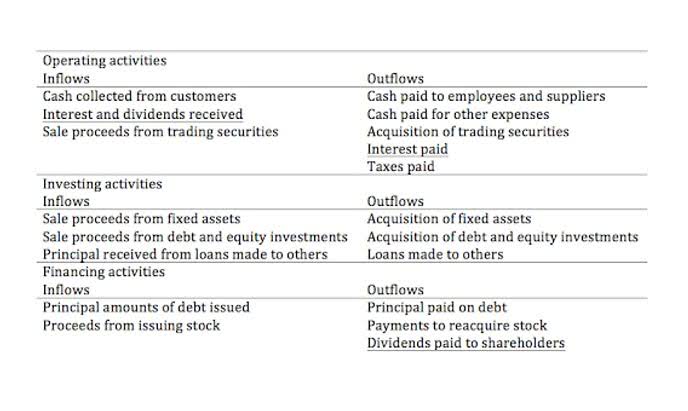
Generally speaking, this means that your income is divided into portions called tax brackets, and each portion is taxed at a specific tax rate. High earners pay more in taxes, as portions of their income are subject to higher tax rates. Typically, you don’t need to manually calculate your withholding tax. The IRS has taken some of the guesswork out of the process by https://www.bookstime.com/ creating a tax withholding estimator. The IRS recommends checking your withholding for lots of reasons, including if you work a seasonal job, claim the child tax credit or had a large refund or tax bill last year. If you find that you end up paying more money on tax filing day, you can lower that amount by requesting that additional money be held from your paycheck.
Standard Deduction
- Yes, the federal withholding tax tables are different for 2024.
- Tax withholding is a way for the U.S. government to maintain its pay-as-you-go (or pay-as-you-earn) income tax system.
- The IRS released an updated version of Form W-4 for 2024, which can be used to adjust withholdings on income earned in 2024.
- It’s important to note that while past versions of the W-4 allowed you to claim allowances, the current version doesn’t.
- That would mean that instead of getting a tax refund, you would owe money.
- How do you avoid paying too much in taxes each month so you don’t get a big refund?
- The IRS adjusts income thresholds for the tables each year to account for inflation.
To determine the withholding amount, you will need an employee’s W-4 form, filing status, and pay frequency. Every new employee at a business needs to fill out a W-4 for this purpose. Not all paychecks end up subject to federal income tax. The federal income tax might result in $0 if the calculation’s gross pay and deductions resulted in an annual pay that is less than the standard deduction. The standard deduction is a fixed amount that IRS deducts from everyone’s federal income tax each year.

What Is FICA Withholding on a Paycheck?
- In 2022, your employer will withhold 6.2% of your wages (up to $147,000) for Social Security.
- However, withholding too much allows Uncle Sam to use your money interest-free—until you’re paid a refund.
- Then, we apply the appropriate tax bracket and rate(s) based on taxable income and filing status to calculate what amount in taxes the government expects you to pay.
- If you want more taxes taken out of your paychecks, perhaps leading to a lower bill or a tax refund when you file, here’s how you might adjust your W-4.
- Don’t worry, though—with the right resources and support, you can set up payroll smoothly and efficiently.
Regardless of how often you’re paid throughout the year, the withheld taxes will be the same at the end of the year. Some people get monthly paychecks (12 per year), while some how to calculate withholding tax are paid twice a month on set dates (24 paychecks per year) and others are paid bi-weekly (26 paychecks per year). The frequency of your paychecks will affect their size.
Tax Withholding Estimator
The Tax Withholding Estimator results will only be as accurate as the information the taxpayer enters. The other type of withholding tax is levied against nonresident aliens to ensure that proper taxes are paid on income sources from within the U.S. A nonresident alien is someone who is foreign-born and has not passed the green card test or a substantial presence test. If you are subject to state income taxes their laws vary so we would need to know the state.

To change your tax withholding amount:
However, if not enough tax has been held back, then the individual will owe money to the IRS. View how much tax you may pay in other states based on the filing status and state entered above. If you or your spouse are disable or over the age of 62, you may be eligible for a homestead credit, which can help to lessen the burden of property tax or rent payments. The maximum credit allowed for 2021 is $1,168, and the allowable credit amount is based on household income. Those who pay tuition for a qualifying Wisconsin student may be eligible for a tax credit worth up to $6,973 for the 2021 tax year.
You can make changes to your withholding at any time by submitting a new W-4 form to your employer. PaycheckCity delivers accurate paycheck calculations to tens of millions of individuals, small businesses, and payroll professionals every year since 1999. More on the bonus tax rate and how bonus taxes are withheld. Use MyTax Illinois at mytax.illinois.gov to renew your IFTA license, order decals, and file and pay quarterly returns. Illinois Motor Fuel Use Tax is comprised of two parts, Part A and Part B. This tax is reported and paid by licensees under the International Fuel Tax Agreement (IFTA). The rates listed here are effective July 1, 2024, through December 31, 2024, for use on the quarterly IFTA returns.
These are contributions that you make before any taxes are withheld from your paycheck. The most common pre-tax contributions are for retirement accounts such as a 401(k) or 403(b). So if you elect to save 10% of your income in your company’s 401(k) plan, 10% of your pay will come out of each paycheck. If you increase your contributions, your paychecks will get smaller. However, making pre-tax contributions will also decrease the amount of your pay that is subject to income tax. The money also grows tax-free so that you only pay income tax when you withdraw it, at which point it has (hopefully) grown substantially.
How Your Paycheck Works: Local Factors
The credit only applies to expenses for tuition and mandatory fees. Separate expenses, such as room and board or athletic tickets, may not be included. That said, not all federally-itemized deductions are eligible to be used toward this credit. For example, there are limits on the types of medical expenses and interest charges that can be applied to the credit.
What Happens if You Can’t Pay Your Taxes?
Small business owners should learn how to calculate withholding taxes to make sure employees are being taxed at the correct rate. Whether or not you must file a tax return in Wisconsin depends on your gross income. Part-year residents and non-residents must file if their total gross income is over $2,000. Full-year residents will be subject to different limits, depending on their filing status and age.
